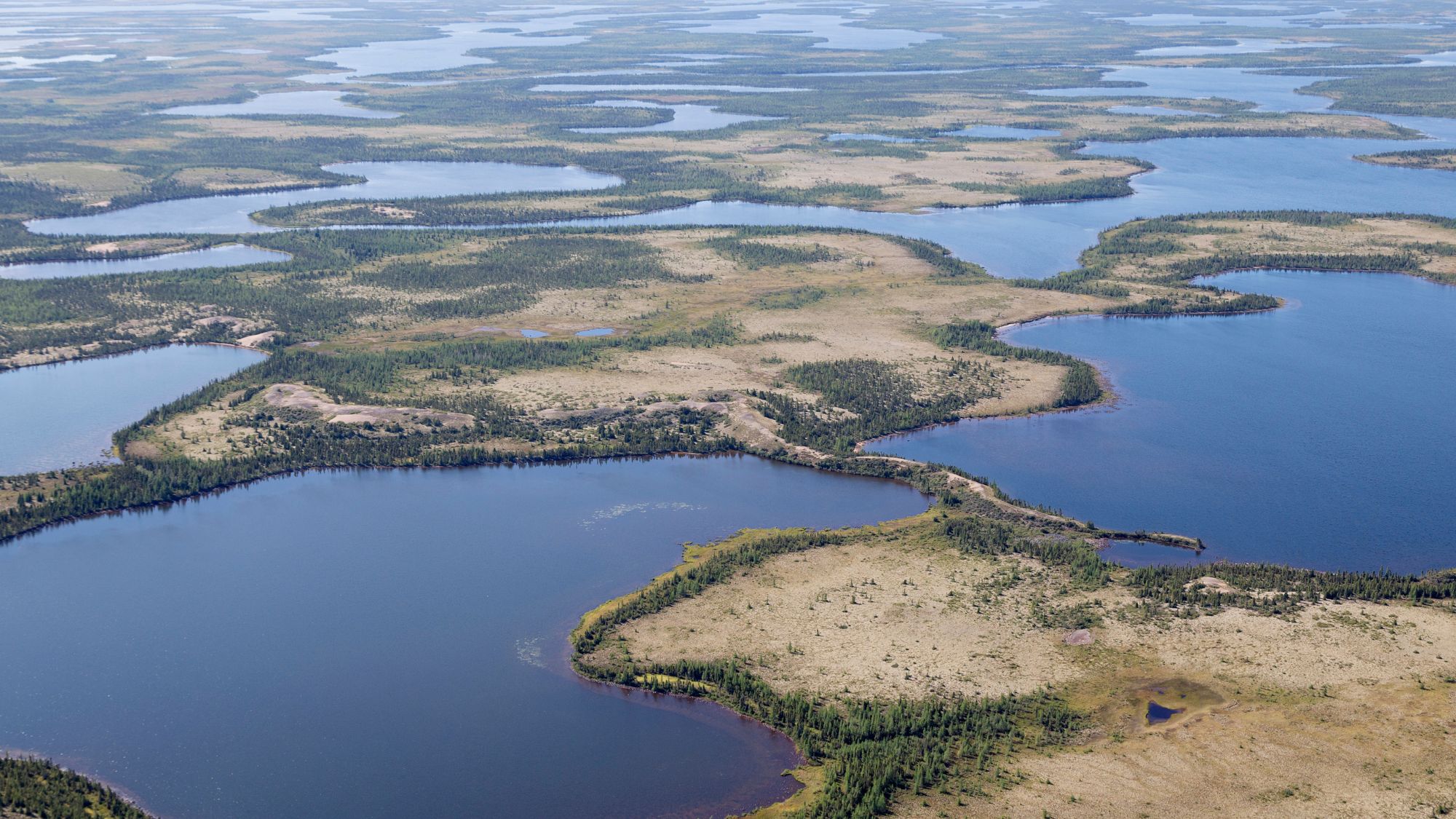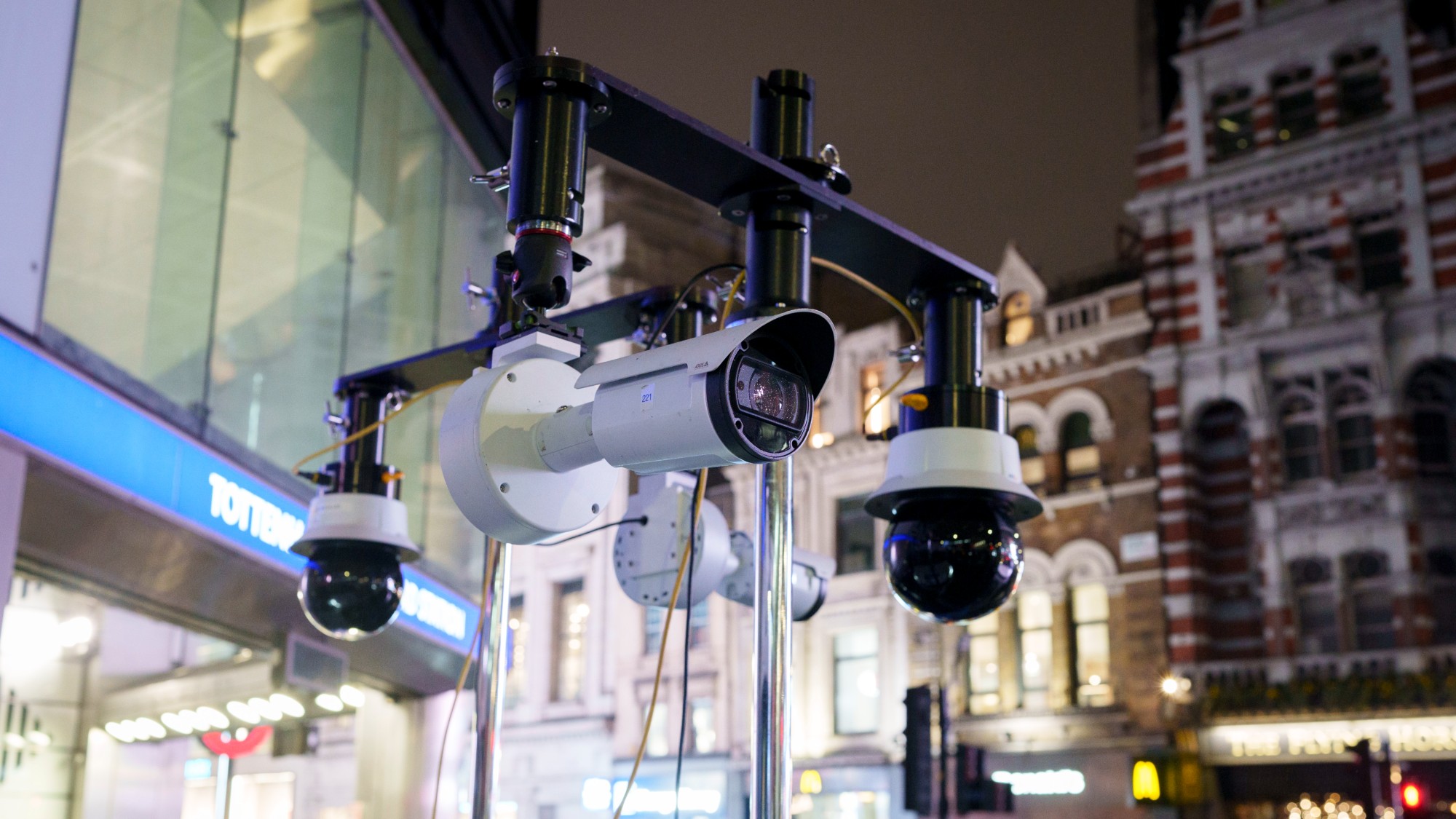A crowd gathers in heaven
Pope John Paul II is naming new saints at a record pace. What does it take to become a saint?
What is a saint?
In both common use and most spiritual traditions, it’s a person who lives a life of extraordinary virtue. In the Roman Catholic Church, the term has a very specific meaning: A saint is a holy man or woman who has been admitted into heaven, and whose presence there has been revealed by God. Saints are believed to have a special closeness with God, so many Catholics petition the saints to ask God to intercede on their behalf. Patron saints have been designated for virtually every place, profession, or predicament. There are patron saints for sick children, broken bones, and job hunters. Blaise is the patron saint of throats; Isidore of Seville, author of textbooks, is the patron saint of Internet users. And Joseph of Cupertino, dubbed the “flying friar” because of his rapturous levitations, is the patron saint of pilots and astronauts.
How many saints are there?
The Week
Escape your echo chamber. Get the facts behind the news, plus analysis from multiple perspectives.

Sign up for The Week's Free Newsletters
From our morning news briefing to a weekly Good News Newsletter, get the best of The Week delivered directly to your inbox.
From our morning news briefing to a weekly Good News Newsletter, get the best of The Week delivered directly to your inbox.
The Roman Martyrology, an official list of saints’ feasts, has more than 6,500 entries. The vast majority were early martyrs and other church heroes elevated to sainthood by popular acclaim. “No one sat around in the third century debating whether the martyred maiden Agnes, who died resisting her rapist, was a saint,” said Monsignor Kevin Irwin of Catholic University. “They just brought candles to her tomb and prayed in her name and said God worked miracles when she interceded.” In 1234, to gain some control over the naming of saints, the Vatican instituted a formal process for canonization, with most of the authority vested in the pope.
How many has the current pope named?
Pope John Paul II has canonized 477 saints. That’s more than all the saints named over the past eight centuries, by the preceding 86 popes invested with this power. John Paul II has declared 1,318 others to be “blessed,” putting them one step away from sainthood. For centuries, most new saints were European priests and nuns, but John Paul II has canonized everyone from slaves to duchesses, from all over the world. Advisors say the pope is trying to remind Catholics that anyone can live a life of extraordinary virtue. He often quotes the Latin saying “Verba volant, exempla trahunt”—“Words fly away, examples inspire.”
How does the pope do it?
A free daily email with the biggest news stories of the day – and the best features from TheWeek.com
By changing the rules. Candidates still are vetted by church bureaucrats in the Congregation for the Causes of Saints. But Pope John Paul II has streamlined the process by reducing the number of verified miracles necessary for sainthood. Three miracles—usually extraordinary healings—used to be the minimum. Now any martyred Catholic can be canonized with a single miracle. Other candidates now need only two verified miracles. John Paul II also has done away with the centuries-old position of devil’s advocate—a Vatican official who was responsible for trying to poke holes in the case for sainthood. These changes have greatly accelerated the process; in the past, there were often decades or even centuries between a holy person’s death and their canonization. Joan of Arc wasn’t canonized until five centuries after she was burned at the stake. Herman the Cripple, a religious scholar and poet, was recognized as blessed 800 years after his death. But under Pope John Paul II, Mother Teresa was beatified just five years after her 1997 death. She now needs to be credited with just one more miracle to be named a saint. No one has ever reached the threshold of sainthood so quickly.
Is the new process better?
That’s a matter of strong disagreement. “There cannot be too many saints,” said Cardinal Joseph Ratzinger, the Pope’s closest advisor. Every saint serves as an inspiration, he says, helping the faithful on the road to God. But some Catholic critics say that the Vatican has become a “saint factory,” cheapening the designation. “Just add holy water and stir” is how one Catholic priest recently characterized the new policy. The critics say that in his haste, the pope has made saints of the unworthy.
Whose sainthood is being questioned?
The pope recently beatified Padre Pio, an Italian monk who claimed to have periodic manifestations of stigmata—mysterious bleeding wounds similar to those Christ suffered on the cross. But some who’ve investigated Pio’s claims insist he was a fraud, and a womanizer to boot. Josemaria Escriva, the Spanish founder of the ultraconservative lay group Opus Dei, was whisked into sainthood 27 years after his death. Supporters spent $1 million promoting his cause, calling him an example for all Catholics. Critics say Escriva was a Nazi sympathizer who founded a movement so secretive it borders on being a cult. John Paul II’s naming of so many saints is “completely disastrous,” says Catholic writer Margaret Hebblethwaite. “It’s going to land his successors with the embarrassing task of demoting people who nobody wanted to be saints anyway.”
Saints can be demoted?
They sure can. St. Christopher, patron saint of travelers, is a case in point. Christopher was a third-century martyr who, the legend goes, selflessly helped travelers by carrying them across a dangerous stream. Christopher has been a beloved saint for centuries, but the Vatican concluded in 1969 that there was no proof he really existed. Pope Paul VI downgraded his feast day, removing it from the liturgical calendar. Some say that avoiding such painful errors is reason enough to slow the flood of new saints. “What’s the rush?” said the Rev. Richard McBrien, author of Lives of the Saints. “If someone is really in heaven, we’ll find out in time.”
Mother Teresa’s miracles
-
 Heavenly spectacle in the wilds of Canada
Heavenly spectacle in the wilds of CanadaThe Week Recommends ‘Mind-bending’ outpost for spotting animals – and the northern lights
-
 Facial recognition: a revolution in policing
Facial recognition: a revolution in policingTalking Point All 43 police forces in England and Wales are set to be granted access, with those against calling for increasing safeguards on the technology
-
 Codeword: December 14, 2025
Codeword: December 14, 2025The daily codeword puzzle from The Week